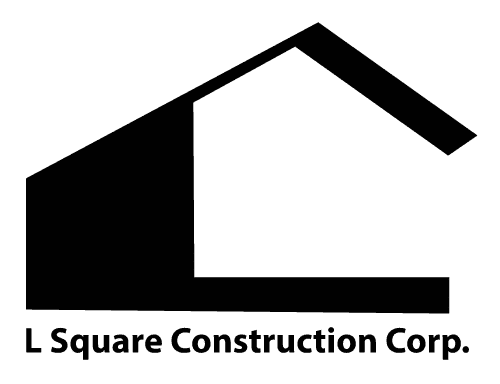
Avoid These Common Mistakes in Granny House Designs
Granny house designs are becoming a popular choice for homeowners looking to create additional living spaces. Whether you’re building a small home for a relative or creating a cozy space for guests, it’s essential to avoid design mistakes that could affect comfort, functionality, and budget. In this article, we will discuss the common pitfalls in granny house designs, provide facts and figures, and offer tips to ensure a smooth design process.
By avoiding these mistakes, you’ll ensure that your granny house design is practical, functional, and aesthetically pleasing. Let’s dive into the details.
1. Underestimating the Importance of Proper Planning
Many people make the mistake of rushing into their granny house designs without proper planning. Before you start construction, it’s crucial to sit down and consider all aspects of the design. Think about the layout, the number of rooms, and the overall flow of the space. It’s essential to plan for both the present and future needs of the inhabitants.
Why It Matters:
Planning is the foundation of a successful granny house. When done correctly, it can help save you time and money in the long run. With clear plans, you avoid costly changes during construction.
Tip: Always work with an experienced designer or architect to guide you through the planning process.
2. Neglecting to Incorporate Natural Light
Granny houses often become dark and dreary if they lack enough natural light. Neglecting to place windows properly or choosing designs with small windows can create an unpleasant atmosphere. Natural light not only brightens a space, but it also contributes to better mood and health for the people living there.
Why It Matters:
Proper use of natural light can reduce energy bills and improve the quality of life inside. Studies show that people who live in spaces with plenty of natural light are happier and more productive.
Tip: Consider large windows or even skylights to brighten up the space. Opt for designs that maximize sunlight.
3. Choosing a Poor Layout
A common mistake in granny house designs is opting for a layout that doesn’t work well for the intended use. It’s essential to choose a design that accommodates the needs of the person or family living in the space. A poorly laid out granny house can feel cramped, uncomfortable, and impractical.
Why It Matters:
A good layout makes all the difference. It determines how easy it is to move around, how efficient the use of space is, and how comfortable the home feels.
Tip: Use space-saving furniture and plan for wide hallways and doorways to improve accessibility.
4. Ignoring Accessibility Needs
One of the main reasons people build granny houses is to provide a comfortable living space for elderly relatives. Ignoring accessibility features in the design can result in a space that isn’t functional for older adults or individuals with disabilities.
Why It Matters:
Incorporating accessible design features is crucial for safety and comfort. Simple additions like wider doorways, ramps, and grab bars can make the space more usable.
Tip: Ensure that your granny house designs include easy access to all areas. Features such as step-free entrances and bathrooms with walk-in showers are essential for elderly residents.
5. Not Considering Storage Space
When designing a granny house, it’s easy to overlook the importance of storage space. Many people don’t realize how much storage they need until they start living in the house. Without enough storage, you may end up with clutter, which can make the space feel small and chaotic.
Why It Matters:
Adequate storage space helps keep the home organized and functional. You’ll want to ensure that there’s room for everything from clothing to kitchen supplies and even extra linens.
Tip: Think about clever storage solutions such as built-in shelves, under-bed storage, or cabinets in unexpected places.
6. Overlooking the Budget
Designing a granny house on a tight budget can be challenging, but failing to plan for costs properly can lead to problems down the road. Many people make the mistake of underestimating how much things like building materials, permits, and labor will cost.
Why It Matters:
A budget helps keep you on track. It ensures that you can complete your granny house without running out of funds halfway through the project.
Tip: Set a realistic budget from the start. Include a buffer for unexpected expenses. Work with your contractor to prioritize essential features and cut back on non-essentials if needed.
7. Forgetting About Privacy
While granny houses are often built on the same property as the main home, it’s essential to consider privacy. Poor design can lead to a lack of separation, which may make the space feel too exposed or uncomfortable.
Why It Matters:
Privacy is key to a comfortable living experience. A lack of privacy could lead to friction between family members or create unnecessary stress.
Tip: Think about the placement of windows, the location of the entrance, and how close the house is to the main home. Consider adding privacy screens or fencing if necessary.
8. Choosing the Wrong Building Materials
Using the wrong building materials can make a granny house less durable, less energy-efficient, and more difficult to maintain. It’s important to choose materials that match the climate and the lifestyle of the people living in the house.
Why It Matters:
The right materials can ensure that your granny house lasts longer, is easier to maintain, and stays energy-efficient. For example, insulated walls and energy-efficient windows can help save on energy bills.
Tip: Always consult with a contractor to choose materials that are best suited for your climate and budget. Consider low-maintenance options to reduce long-term upkeep.
9. Not Accounting for Future Needs
Granny houses are often designed with the current needs of the residents in mind. However, people’s needs change over time. Failing to consider future needs can lead to a space that doesn’t work well in the years to come.
Why It Matters:
Planning for the future helps you avoid having to make costly and inconvenient changes later. For example, you might need more space as your relative ages or if their mobility needs change.
Tip: Design with flexibility in mind. Consider how easy it would be to modify the space as needs evolve.
10. Forgetting About the Exterior Design
While the interior design of a granny house is important, the exterior is equally crucial. The exterior is the first thing people see, and it should complement the surrounding environment and the main house.
Why It Matters:
An aesthetically pleasing exterior enhances the overall appeal of the property. It can also increase the property’s value if you ever decide to sell.
Tip: Choose an exterior design that blends with the main home and the neighborhood’s style. Pay attention to landscaping and curb appeal as well.
Conclusion
When it comes to granny house designs, careful planning is the key to success. By avoiding common mistakes such as poor planning, lack of natural light, and ignoring accessibility, you can create a functional, comfortable, and aesthetically pleasing home. Remember, it’s not just about building a house—it’s about creating a space that will work for you and your family for years to come.
If you’re ready to start your granny house project, don’t hesitate to reach out to LS Contractor. Our team of experts will help you avoid costly mistakes and guide you through every step of the process. Contact us today to get started!

